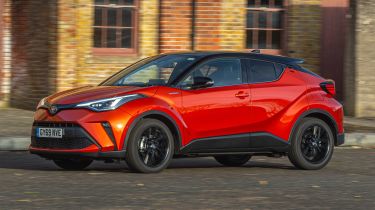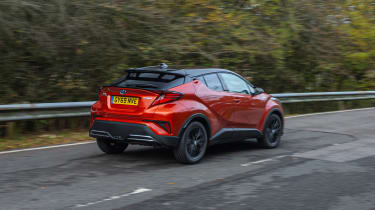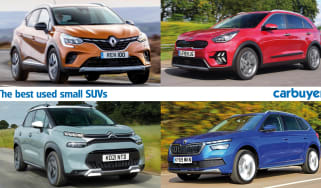Toyota C-HR SUV - MPG, running costs & CO2 (2016-2023)
Sophisticated hybrid powertrain in the Toyota C-HR offers diesel-like economy
Beyond its appealing looks and top-notch interior, the Toyota C-HR has to make sound financial sense in order to capture a slice of the lucrative compact crossover market. Fortunately, the sums look to add up relatively well.
Although the C-HR doesn't undercut its rivals on purchase price, our experts have determined the Toyota will be less prone to losing its value than more mainstream models. It’s expected that a three-year-old/36,000-mile example will retain something in the region of 50% of its list price. This projected figure is an improvement on other Toyota models and right up there with the residual values associated with premium brands like BMW and Mercedes.
Toyota C-HR MPG & CO2
When it comes to everyday running costs, the C-HR is impressive. The 1.8-litre version uses the same petrol engine and electric motor combination as the Toyota Prius, but the bulkier and less aerodynamic shape of the C-HR blunts its efficiency slightly. However, claimed WLTP fuel economy of up to 58.9mpg and CO2 emissions from just 109g/km are impressive. A new 2.0-litre model was introduced in 2019 and it achieves fuel economy of up to 54.3mpg and CO2 emissions from 119g/km. These results almost surpass the diesel-engined competition, such as the Nissan Qashqai 1.5-litre dCi and SEAT Ateca 1.6-litre TDI. They should also appeal to company-car drivers who will enjoy much more affordable Benefit-in-Kind (BiK) tax rates. VED road tax is slightly discounted thanks to its hybrid powertrain.
More reviews
Note that these figures apply only to cars fitted with 17-inch alloy wheels, normally Icon models. Fitting the the larger 18-inch wheels sees fuel economy dropping slightly, while CO2 emissions are unchanged. Furthermore, our past experience with hybrid cars suggests they can struggle to reach quoted economy figures. When we tested the 2.0-litre version, we could achieve the claimed fuel economy for normal driving but it dropped into the 40s when we took the car on the motorway, where the car has to rely more heavily on the petrol engine.
Servicing
By today’s standards, the Toyota C-HR has relatively short service intervals of just 10,000 miles between visits to a workshop. Toyota offers fixed price service plans starting from £15 per month, making it easy to budget for maintenance. Even if you don’t opt for a service plan, all servicing is performed based on fixed-price operations, so there shouldn’t be any nasty surprises. You local dealer will be happy to advise you of costs based on your driving habits and expected annual mileage.
Insurance
The Toyota C-HR starts in insurance groups 15 and 16 when fitted with the 1.8-litre petrol hybrid powertrain. These ratings are similar to the entry-level SEAT Ateca and Nissan Qashqai, top 2.0-litre Hybrid versions command higher premiums thanks to insurance groups of 23 and 24.
Warranty
The Toyota C-HR matches the groundbreaking 10-year/100,000-mile warranty provided on all other UK- market Toyota models. It’s a stronger warranty offer than you’ll get from any other manufacturers, and even cars that were bought before this generous warranty came out can get additional years of cover by having main dealer services annually.
As an extension to the general warranty, all Toyotas also benefit from a three-year paint warranty and a 12-year anti-perforation corrosion guarantee.
Although earlier Toyota hybrid models were provided with an extended warranty for specific hybrid components, this is no longer the case. However, you can still purchase a specific policy to cover these components for up to 11 years, with no upper mileage limit.
Which Is Best?
Cheapest
- Name1.8 Hybrid Icon 5dr CVT
- Gearbox typeAuto
- RRP£31,440
Most Economical
- Name2.0 PHEV Design 5dr CVT
- Gearbox typeAuto
- RRP£39,230
Fastest
- Name2.0 PHEV Design 5dr CVT [Bi-tone]
- Gearbox typeAuto
- RRP£39,580














